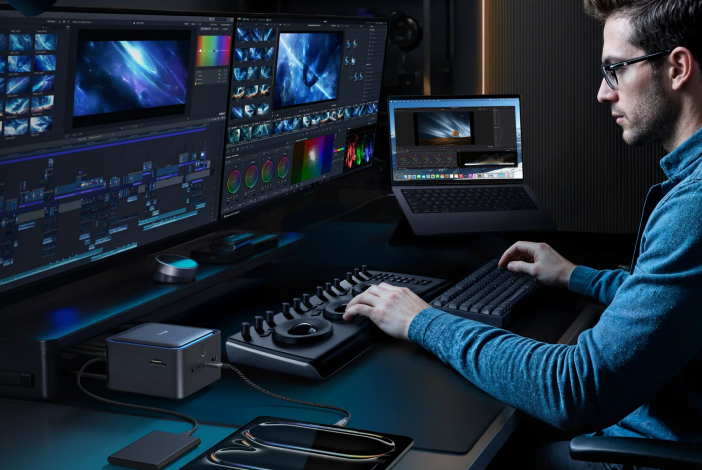
For professionals who juggle multiple applications at once, dual 4K monitors can significantly improve workflow efficiency. Video editors, designers, data analysts, and remote workers all benefit from having more screen space. But powering and managing two 4K displays requires more than just plugging into a laptop, but also a robust docking station.USB-C docks have become the go-to solution, but can they deliver enough bandwidth and power to handle dual 4K monitors without compromising speed or reliability? In this article, let’s explore how the right usb c docking station makes it possible.
How USB-C Docking Stations Power Dual 4K Displays
Not all docks are created equal, and performance depends on bandwidth, port design, and power delivery. Here are the most important factors to consider.
Bandwidth and Data Transfer Speeds
The backbone of any docking station is its data throughput. Standard USB-C docks that support DisplayPort Alt Mode can usually handle one 4K@60Hz display, but dual 4K requires more bandwidth. Thunderbolt-based docks, like the Anker 778 Thunderbolt Docking Station, offer up to 40Gbps, which easily supports two 4K monitors while maintaining fast file transfers. This ensures you can edit large video files or run graphics-heavy apps without lag.
Power Delivery for Laptops
A docking station must also charge your laptop while driving dual displays. Many docks now support up to 100W or more of Power Delivery (PD), enough to keep even power-hungry laptops running. For example, the Anker Prime TB5 Docking Station provides 140W upstream charging, meaning your MacBook Pro or Windows workstation stays fully powered even under heavy workloads. Without sufficient PD, your laptop may slowly drain despite being plugged in.
DisplayPort and HDMI Capabilities
When shopping for a dock, the type of video outputs matters. Dual HDMI or DisplayPort 1.4 connections ensure crisp, stable 4K@60Hz performance. Some advanced models, like the Anker Prime Docking Station with DisplayLink, support triple displays, including one in 8K resolution, making them ideal for creators and multitaskers. DisplayLink technology also helps bypass OS limitations, making it easier for Mac and Windows users alike to connect multiple high-resolution monitors.
Reliable Cooling and Stability
Driving two 4K monitors continuously generates heat, especially when combined with device charging. Premium docks integrate cooling systems to maintain performance. The Anker Prime Charging Docking Station features ActiveShield safety and a smart display to monitor heat and power in real time, ensuring stable long-term performance without throttling or overheating.
Desk Organization and Additional Features
A docking station should do more than connect monitors. Ports for USB-C, USB-A, Ethernet, and SD cards are essential for professional setups. The Anker 675 Docking Station, which doubles as a monitor stand, not only supports display expansion but also improves ergonomics and workspace tidiness. Built-in wireless charging pads and front-facing ports add even more convenience for daily use.
Compatibility Across Devices
Both macOS and Windows users benefit from docks that are broadly compatible. Many Anker docking stations support dual 4K output across platforms, though it’s important to check system requirements, especially for M1/M2 MacBooks with native multi-display limitations. By pairing the right dock with your laptop, you can ensure seamless cross-device performance.
Conclusion
So, a USB-C docking station can absolutely power dual 4K monitors provided you choose one with sufficient bandwidth, power delivery, and video output support. Options like the Anker Prime TB5 Docking Station or the Anker 778 Thunderbolt Dock deliver professional-grade performance, keeping laptops charged while ensuring smooth, high-resolution display output. For professionals seeking a reliable dual 4K setup, investing in a high-quality dock today is essential for an efficient, future-ready workspace.




